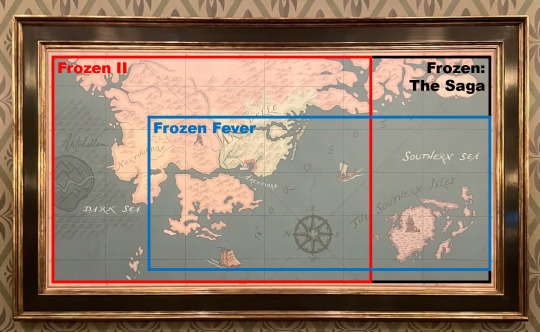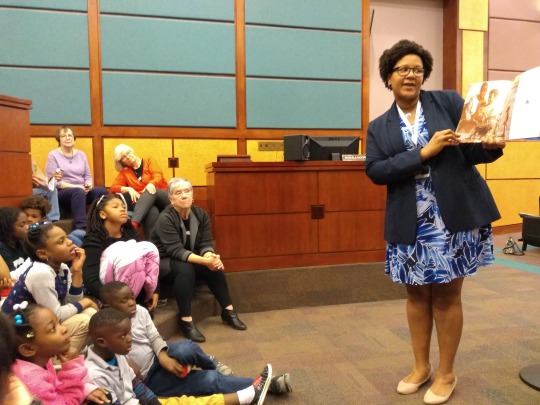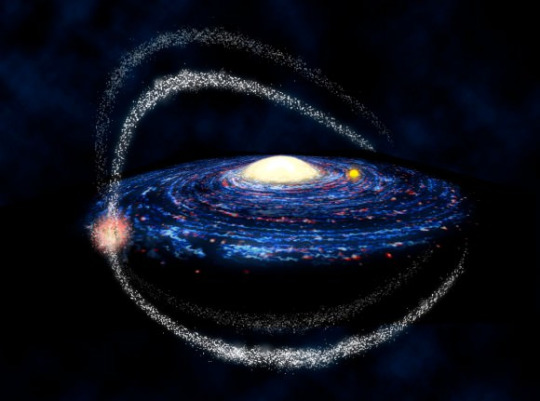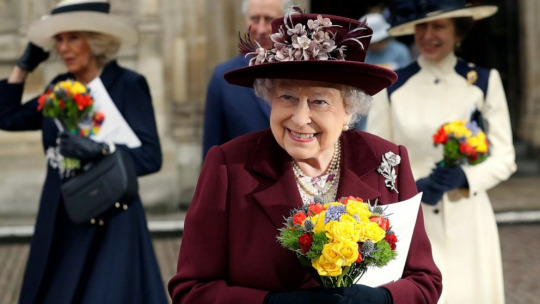#anna university results 2021
Explore tagged Tumblr posts
Text
Top Femslash Ships Bracket: Seeding
As promised, we're back with a new bracket! However, we're doing things a little differently this time. Rather than taking the data for seeding directly from a ranked list, we want you guys to be a part of the seeding process!
> Here is the Femslash Bracket Seeding Survey! <
This survey contains a list of over 100 ships, pulled from centreoftheselights's AO3 ship stats for 2023 and 2024, and Tumblr's year in review, as well as a few submissions that are not on either list but are considered iconic or historically important. It asks two questions: which ships have you heard of, and which ships do you view positively? The final seeding for the bracket will be based on a ratio of these numbers, from which we will rank the top 96!
A few notes regarding this survey:
Please answer as honestly as you can! Yes, that does mean going through a long list of ships twice in order to check all the relevant boxes, but such is the price we pay for accurate data.
Please only submit the survey once! While we normally delight in voter fraud, artificially boosting your favorite ship in this survey will only skew the results with no benefit; in fact, it could potentially hurt your chances in the actual bracket!
Do, however, feel free to reblog this post so we get a larger sample size.
The form does require that you be logged into a Google account; however, we are not collecting email addresses, and responses will be fully anonymous.
As always, this poll is a celebration of fandom and fandom history; we're aware that there are certain issues with many of the listed pairings and sources, but they are a part of that history. Please do not take this as an endorsement, and refrain from harassment.
We will be collecting responses until December 22, at 11:59 pm EST.
Take the survey here!
And, if you'd like to review the ships before you click through, here's the full list below the cut (listed alphabetically by source)
The 100 - Clarke Griffin/Lexa
Adventure Time - Princess Bubblegum/Marceline
Aespa (Band) - Kim Minjeong | Winter/Yu Jimin | Karina
Agatha All Along (TV) - Agatha Harkness/Rio Vidal
Agent Carter (TV) - Peggy Carter/Angie Martinelli
Agents of SHIELD (TV) - Jemma Simmons/Skye | Daisy Johnson
The Amazing Digital Circus - Pomni/Ragatha
Amphibia - Anne Boonchuy/Sasha Waybright
Amphibia - Anne Boonchuy/Marcy Wu
Arcane: League of Legends - Caitlyn/Vi
Attack on Titan - Mikasa Ackerman/Annie Leonhart
Attack on Titan - Krista Lenz | Historia Reiss/Ymir
Avatar: The Last Airbender - Azula/Ty Lee
Avatar: Legend of Korra - Korra/Asami Sato
Buffy the Vampire Slayer - Faith Lehane/Buffy Summers
Buffy the Vampire Slayer - Tara Maclay/Willow Rosenberg
Carmilla (Web Series) - Laura Hollis/Carmilla Kearnstein
Carol (2015) - Carol Aird/Therese Belivet
Criminal Minds - Jennifer "JJ" Jareau/Emily Prentiss
Critical Role - Beauregard Lionett/Yasha
Critical Role - Laudna/Imogen Temult
DC's Legends of Tomorrow - Sara Lance/Ava Sharpe
DC Universe - Pamela Isley | Poison Ivy/Harleen Quinzel | Harley Quinn
The Devil Wears Prada - Miranda Priestly/Andrea Sachs
Doctor Who - Thirteenth Doctor/Yasmin Khan
Dungeon Meshi - Marcille Donato/Falin Touden
Frozen - Anna/Elsa
Game of Thrones - Sansa Stark/Margaery Tyrell
Genshin Impact - Beidou/Ningguang
Genshin Impact - Raiden Ei | Baal/Yae Miko
Ghostbusters (2016) - Erin Gilbert/Jillian Holtzmann
Glee - Rachel Berry/Quinn Fabray
Glee - Santana Lopez/Brittany S. Pierce
Grey's Anatomy - Meredith Grey/Addison Montgomery
Haikyuu!! - Shimizu Kiyoko/Yachi Hitoka
Harry Potter - Hermione Granger/Pansy Parkinson
Harry Potter - Luna Lovegood/Ginny Weasley
The Haunting of Bly Manor (TV) - Dani Clayton/Jamie Taylor
Hawkeye (TV 2021) - Yelena Belova/Kate Bishop
Hazbin Hotel - Charlie Magne | Morningstar/Vaggie
Holby City - Serena Campbell/Bernie Wolfe
Homestuck - Rose Lalonde/Kanaya Maryam
Homestuck - Terezi Pyrope/Vriska Serket
House of the Dragon (TV) - Alicent Hightower/Rhaenyra Targaryen
Jujutsu Kaisen - Kugisaki Nobara/Zenin Maki
Killing Eve - Eve Polastri/Villanelle
The Last of Us - Dina/Ellie
Legacies (TV 2018) - Hope Mikaelson/Josie Saltzman
Legacies (TV 2018) - Penelope Park/Josie Saltzman
Life is Strange - Rachel Amber/Chloe Price
Life is Strange - Maxine "Max" Caufield/Chloe Price
LIttle Witch Academia - Diana Cavendish/Atsuko "Akko" Kagari
The Locked Tomb - Gideon Nav/Harrowhark Nonagesimus
Marvel Cinematic Universe - Maria Hill/Natasha Romanov
Marvel Cinematic Universe - Wanda Maximoff/Natasha Romanov
Mass Effect Trilogy - Female Shepard/Liara T'Soni
Merlin (TV) - Gwen/Morgana
Miraculous Ladybug - Juleka Couffaine/Rose Lavillant
Motherland: Fort Salem (TV) - Raelle Collar/Scylla Ramshorn
My Hero Academia - Jirou Kyouka/Yaoyorozu Momo
My Hero Academia - Toga Himiko/Uraraka Ochako
Naruto - Haruno Sakura/Yamanaka Ino
NCIS: Hawai'i - Lucy Tara/Kate Whistler
The Old Guard (Movie 2020) - Andy | Andromache of Scythia/Quynh | Noriko
Once Upon a Time - Evil Queen | Regina Mills/Emma Swan
Orphan Black - Delphine Cormier/Cosima Niehaus
Overwatch - Fareeha "Pharah" Amari/Angela "Mercy" Ziegler
Overwatch - Lena "Tracer" Oxton/Widowmaker | Amelie Lacroix
The Owl House - Amity Blight/Luz Noceda
Person of Interest - Root | Samantha Groves/Sameen Shaw
Pitch Perfect (Movies) - Chloe Beale/Beca Mitchell
Pokemon - Hanako | Delia Ketchum/Musashi | Jessie
Power Rangers (2017) - Kimberly Hart/Trini
Project SEKAI - Akiyama Mizuki/Shinonome Ena
Project SEKAI - Azusawa Kohane/Shiraishi An
Puella Magi Madoka Magica - Akemi Homura/Kaname Madoka
Revolutionary Girl Utena - Himemiya Anthy/Tenjou Utena
Riverdale (TV 2017) - Cheryl Blossom/Toni Topaz
Rizzoli & Isles - Maura Isles/Jane Rizzoli
RWBY - Blake Belladonna/Yang Xiao Long
RWBY - Ruby Rose/Weiss Schnee
Sailor Moon - Kaiou Michiru | Sailor Neptune/Tenoh Haruka | Sailor Uranus
Shadowhunters (TV) - Clary Fray/Isabelle Lightwood
She-Ra and the Princesses of Power - Adora/Catra
Splatoon (Video Games) - Marina/Pearl
Star Trek: Voyager - Kathryn Janeway/Seven of Nine
Station 19 - Maya Bishop/Carina DeLuca
Steven Universe - Lapis Lazuli/Peridot
Steven Universe - Ruby/Sapphire
Stranger Things - Robin Buckley/Nancy Wheeler
Stranger Things - Eleven | Jane Hopper/Maxine "Max" Mayfield
Supergirl - Alex Danvers/Maggie Sawyer
Supergirl - Kara Danvers/Lena Luthor
Teen Wolf - Allison Argent/Lydia Martin
Undertale - Alphys/Undyne
Warehouse 13 - Myka Bering/Helena "H.G." Wells
Warrior Nun - Sister Beatrice/Ava Silva
Wednesday (2022) - Wednesday Addams/Enid Sinclair
Wicked - Schwartz/Holzman - Elphaba Thropp/Galinda Upland
The Wilds (TV 2020) - Shelby Goodkind/Toni Shalifoe
Women's Association Football | Soccer RPF - Tobin Heath/Christen Press
Wynonna Earp - Waverly Earp/Nicole Haught
Xena: Warrior Princess - Gabrielle/Xena
870 notes
·
View notes
Text
We finally know the full layout of the canon Frozenverse!
Thanks to this post (requires an account) by twitter-user ann_mochi and this tumblr-post by @sparebutton , we FINALLY have a full map of the known Fozen movie-universe!
Previously, we've seen glimpses of the general geography of Arendelle and the surrounding lands from Frozen Fever, Frozen II and in books and promotion material surrounding the movies and I even wrote a 3-part series about Frozen's geography back in 2021, but never before has there been a source showing Anna and Elsa's world to its full extent and in such detail!
Original image.

Thanks to this image being framed and hung on a wall, the process of aligning it correctly was very easy! I used my ancient copy of SketchUp to edit and match the photo to a flat surface and with the help of Gigapixel upscaling, this is the result!
Note: north is to the left.

It looks awesome IMO 😍
For future installments, what we're missing are labels for other adjacent kingdoms, but it appears Disney never seems to bother with such trivial worldbuilding details.
Below, I've put together a quick overview of the areas visible on previous Frozen maps.

The Frozen Fever map mostly covers ocean. The northern half of the continent was changed in Frozen II.

Iduna's map from Frozen II map was the most detailed version we had for a long time and it added things like borders and names for the Arenfjord and the Dark Sea. It covers 3/4 the full map.

Technically, the whole map was also featured in the books "Frozen: The Saga - Anna and Elsa's Journey" and "Frozen II: Spirits of the Enchanted Forest" but it was impossible to attempt any sort of aligning because of the distorted perspective.

There is one more piece of the worldbuilding-puzzle (Weselton) that could be added, but I'll save that for another time.

#frozen#frozen 2#disney frozen#frozen kingdom#fantasy springs#tokyo disneysea#arendelle#northuldra#the southern isles#frozen map#frozen geography#frozen lore#arendelle archives
122 notes
·
View notes
Text
Rates of chronic pain and high-impact pain have risen sharply in the United States since the start of the COVID-19 pandemic, which could be due to an increase in sedentary lifestyles and reduced access to healthcare.
In a study preprinted in medRxiv, researchers estimate that 60 million Americans in 2023 had chronic pain, up from 50 million in 2019. The study is based on results from the 2019, 2021 and 2023 National Health Interview Surveys (NHIS) of a nationally representative sample of about 88,500 U.S. adults.
Caution is warranted when research is preprinted before undergoing peer-review, but the findings here are startling. Rates of chronic pain (CP) rose from 20.6% in 2019 (before the pandemic), to 20.9% in 2021, before surging to 24.3% in 2023.
High impact chronic pain (HICP), which is pain strong enough to limit daily life and work activity, also rose from 7.5% of adults in 2019 to 8.5% in 2023. That translates to 21 million Americans living with debilitating pain.
“Chronic pain and high-impact chronic pain surged dramatically after the COVID pandemic. The widely-cited 20% prevalence of CP in the adult US population appears obsolete,” wrote co-authors Anna Zajacova, PhD, at Western University in Ontario and Hanna Grol-Prokopczyk, PhD, at the University of Buffalo.
“Our findings indicated that chronic pain, already a widespread issue, has reached new heights in the post-pandemic era, necessitating urgent attention and intervention strategies to address and alleviate this growing health crisis.”
The increases in pain occurred in almost all body areas, such as the head, abdomen, back, arms, hands, hips, knees and feet, except for jaw and dental pain. All age groups and both sexes were affected. (Read more at link)
And with more doctors than ever before unwilling or unable to prescribe opioids for actual pain relief.
12 notes
·
View notes
Photo

Summer Blooms Trouble Great Lakes Estuaries
Dear AGU,
A cocktail of blooms made up of potentially toxin-producing cyanobacteria (Microcystis sp. and Dolichospermum sp.) has now proliferated for over 2 weeks in Muskegon Lake, Michigan – a Great Lakes estuary. Muskegon Lake is one of two dozen drowned river-mouth estuaries in West Michigan that flow into Lake Michigan – a Laurentian Great Lake. Because estuaries occur at the end of their watersheds, they integrate signals of climate change and anthropogenic perturbations from across their water and airsheds.
Water quality in Muskegon Lake has been improving for over a decade (as indicated by a time-series buoy observatory www.gvsu.edu/buoy/), and restoration measures resulting in reduced nutrient inputs from the watershed have been credited for the lake’s recovery. However, recent years (2021, 2022, and now 2024) have witnessed record-breaking blooms due to warmer waters initiating earlier spring onset and later fall overturn compounded by highly variable precipitation/river loading. This summer, there are reports of intense cyanobacterial blooms like those in Muskegon Lake coming from several adjacent coastal estuaries (e.g., Mona Lake in the South, and White Lake in the North) – suggesting this is a region-wide phenomenon and that current restoration efforts are inadequate to address the long-term impacts of ongoing change.
Around the world, rivers, lakes and estuaries serve as vital water sources for humanity, biodiversity and ecosystem function. A warming climate and anthropogenic nutrient pollution coupled with more extreme hydrological cycles could turn these waters green and toxic – compromising ecosystem health, water quality, and overall quality of life.
— Bopi Biddanda, Connor Gabel, Nicole D’Arienzo, Dee Phillips, Kay Dennis, Anna Maki and Tony Weinke, Annis Water Resources Institute, Grand Valley State University, Muskegon, Mich. (www.gvsu.edu/wri/)
4 notes
·
View notes
Text
Twentieth Century History
excerpt from a 2021 book called Excourse Puzzlers, published by the Royal Tommarth Castinghouse. This was a collection of casual party games using the branding and popularity of a long-running series begun by Merch couple Anna and Ralph Highwater in the 1930s.
Twentieth Century History II (answers on sheet 143)
In which Mendevan [North American] polity were the first sobot [radio] transmitters and receivers invented in 1903?
Which of the adolescences [coming-of-age novels] of Dorotha Quistack, published in 1917, won the Hatfell Honour and was adapted into a film starring Joke Pentawer just two years later?
Who led the government whose collapse in 1925 was the beginning of the so-called Portingale Anarchy?
What is the full name of the painkiller present in "Tommy pills", first synthesised in 1932 as the result of collaboration between the Branwen Sanatory and the University of Rimack?
How was the length of the (dime) foot redefined in 1946, giving it the value it has to this day?
Who was the monarch of Hasiny whose death due to a convoy accident in 1950 is alleged to have been purposefully orchestrated with the knowledge of his grandson Pether?
Which national team achieved its only victory in the Lineball Global Tourney to date in 1965?
As part of the 120-year celebrations of the Laic Declarions of Belgrade, what was legalised by laws passed simultaneously in 1970 across over a dozen polities?
What was the name given to the natural disaster which struck Mashick [Mexico] on the 19th of September 1985?
The restored steamship displayed from 1991 to 1995 in Deganny [Deganwy, Wales] was originally part of what polity's "Culombálu" fleet?
3 notes
·
View notes
Text
ADDISON STANTZ - OC INFO

FULL NAME: Addison Louise Stantz
NICKNAME(S): Addie (by everyone)
FACECLAIM: Mary Kate Wiles
FANDOM: Ghostbusters (1984-1989; 2021-)
BIRTHDAY: November 18th, 1991
ZODIAC SIGN: Scorpio
SEXUALITY: Bisexual
GENDER: Female (she/her/hers)
OCCUPATION: Baby-sitter (age 15-18) || Intern at fertility clinic (age 18-22) || Cashier at Barnes and Noble (age 22-26) || Cardiothoracic surgeon (age 26-currently)
BIRTHPLACE: Manhattan, New York City, New York
LIVES IN: Manhattan, New York City, New York (birth-age 18, age 26-currently) || Cambridge, Massachusetts (age 18-22) || Baltimore, Maryland (age 22-26)
NATIONALITY: American
FAMILY:
Ray Stantz (father)
Willow Olson (mother)
Natalie Stantz (younger sister)
Grace Stantz (younger sister) [adoptive]
Gerald Stantz (paternal grandfather, deceased 1982)
Louisa Stantz [nee Crabtree] (paternal grandmother, deceased 1982)
Carl Stantz (paternal uncle, deceased 2021)
Sandra Stantz [nee Foa] (paternal aunt)
Justin Stantz (paternal cousin)
Zachary Stantz (paternal cousin)
Lindsay Stantz (paternal cousin)
Jean Stantz [formerly Garland] (paternal aunt)
Evangeline Garland [nee Stantz] (paternal cousin)
Maxwell "Max" Olson (maternal grandfather, deceased 2000)
Eloise Olson [nee Finnegan] (maternal grandmother, deceased 1996)
Suellen Nelson [nee Olson] (maternal aunt)
Michael Nelson (maternal uncle)
Michael Nelson, Jr. (maternal cousin)
Beau Olson (maternal uncle)
Abigail "Abbie" Olson [nee Prescott] (maternal aunt)
Margaret "Maggie" Olson (maternal cousin)
Elliot Olson (maternal cousin)
Anna Klein [nee Olson] (maternal aunt)
Quinlan Klein (maternal uncle)
Anthony Klein (maternal cousin)
Lindy Klein (maternal cousin)
Marcus Klein (maternal cousin)
Jocelyn Klein (maternal cousin)
Peter Venkman (honorary uncle)
Dana Barrett (honorary aunt)
Oscar Venkman [born Wallance, formerly Barrett] (honorary cousin)
Eliana “Elly” Venkman (honorary cousin)
Andrew Venkman (honorary cousin)
Kelly Venkman (honorary cousin)
Egon Spengler (honorary uncle, deceased 2021)
Cathleen Paige Spengler (honorary aunt)
Callie Spengler (honorary cousin)
Trevor Spengler (honorary cousin)
Phoebe Spengler (honorary cousin)
Marie Spengler (honorary cousin)
Janine Melnitz (honorary aunt)
Louis Tully (honorary uncle)
Lily Tully (honorary cousin)
MOODBOARD

CHARACTERISTICS: Protective, steadfast, passionate, caring, empathetic, charismatic, distrusting, compassionate, rigid, intelligent, self-reliant
LIKES: Her job, her family, playing with Elly, New York City, visiting Uncle Peter and Aunt Dana in Cortland, seeing her mother perform, the holidays
DISLIKES: Her job, the Spenglers (until 2022), Bianca Jacquard, losing a patient, systemic patient neglect/medical malpractice, interns and residents, reminders of her father's past as a Ghostbuster (until 2022), riding the subway, reality television
WEAPON OF CHOICE:
Medical knowledge
Medical expertise
Surgical expertise
PKE Meter (occasionally)
Proton Pack (occasionally)
Ghost Trap (occasionally)
Gigameter (occasionally)
Telepathy (while being controlled by Ariadne)
Telekinesis (while being controlled by Ariadne)
Reality warping (while being controlled by Ariadne)
Hand-to-hand combat (while being controlled by Ariadne)
Quick reflexes (while being controlled by Ariadne)
Levitation (while being controlled by Ariadne)
OTHER PERSONAL INFO:
She received her bachelor's degree from Harvard University and attended medical school at Johns Hopkins.
She has had a crush on Oscar Barrett-Venkman since she was little, and he seems to have feelings for her, as well. There was briefly a rift between them after his fling with Bianca Jacquard resulted in a pregnancy, but she has helped him raise his daughter, Elly.
For most of her life, she held a grudge against the Spengler family for their perceived betrayal, and refused to forgive the surviving members of the family even after Gozer's return and subsequent defeat. It was only after falling under and freeing herself from Ariadne's control, as well as accidentally injuring her father, that she finally let go of her hatred.
Her best friend is Kelly Venkman, but her best friend outside of the family is her former medical school roommate and current colleague, pathologist Dr. Tabitha Rashid.
Addison is Elly Venkman's godmother.
INSPIRATION: Amelia Sheppard (Grey's Anatomy), Elizabeth Weir (Stargate: Atlantis), Catherine Chandler (Beauty and the Beast), Elizabeth Patterson (For Better or For Worse), Kim Wexler (Better Call Saul), Dana Scully (The X-Files), Hannah Asher (Chicago Med), Katrina "Kat" Van Tassel (Headless: A Sleepy Hollow Story)
NAME ANALYSIS:



Playlist available here
#Ghostbusters#Ella's OCs#Mary Kate Wiles#Ghostbusters IDW#Ghostbusters: Afterlife#Ghostbusters: Frozen Empire#Ghostbusters 1984#Ghostbusters II#Cathleen Lives AU#Addison Stantz#OC: Addison Stantz#OC: Fix Broken Hearts
4 notes
·
View notes
Text
Equality Australia: Time to pass the NSW Equality Bill
New Post has been published on https://qnews.com.au/equality-australia-time-to-pass-the-nsw-equality-bill/
Equality Australia: Time to pass the NSW Equality Bill

This year marked 40 years since the decriminalisation of homosexuality in NSW. This bleak anniversary was finally met with an apology and a commitment to ‘do better’ from the Premier of NSW.
WORDS Anna Brown
It was a bittersweet moment for those who were unjustly criminalised by these laws.
An apology can never undo the damage done to them, but what we can hope for as we move forward is to ensure our laws never again cause such harm and distress to our communities. And yet NSW continues to have some of the worst laws in the country for our communities.
The member for Sydney Alex Greenwich’s Equality Legislation Amendment (LGBTIQA+) Bill 2023 – better known as the Equality Bill – is the change we need now to finally fix this and bring NSW closer into line with other states and territories.
Introduced to parliament by Independent MP Alex Greenwich, this bill was the result of extensive legal review and community consultation and an auditing of over 500 existing laws by Equality Australia. The bill would close gaps and modernise laws in NSW that have for too long failed to protect LGBTIQ+ people.
Trans and gender diverse people from NSW live with the nation’s most outdated and discriminatory laws. NSW is the only state that still requires someone to undergo surgery to update their birth certificate to reflect who they are.
In 2021, Equality Australia conducted a survey of 153 trans and gender diverse people born in NSW that found only 14.9 per cent of them had been able to update their gender under existing laws. More than 80 per cent of these people indicated that they would do so if reforms like those in this Bill were passed.
When they are forced to use documents that don’t reflect who they are, trans people may have no choice but to out themselves when applying for jobs, registering for school or university, or opening a bank account.
What most Australians take for granted as a simple piece of paper makes a profound difference in the lives of trans and gender diverse people. It is cruel and archaic to lock recognition behind any form of surgery.
View this post on Instagram
A post shared by Equality Australia (@equalityaustralia)
The bill will also give more rainbow families the dignity and security of legal recognition , providing pathways for the recognition of parentage of children born through commercial surrogacy arrangements. Regardless of the circumstances of their birth, every child in this state deserves equal protection and rights under the law, and loving families should not have to exist under a cloud of criminality.
Unfortunately, LGBTIQ+ people are no strangers to violence. The equality bill ensures that we are better protected from violence by ensuring that threats to ‘out’ a person’s sexual orientation, gender history, HIV+ status or sex work are a potential form of violence when it comes to making an apprehended violence order (AVO).
Meanwhile crimes motivated by hatred or prejudice towards transgender and intersex people will be treated in the same way as other hate crimes.
Up until recently, NSW had the worst laws in the country for LGBTIQ+ people.
This changed earlier this year when state parliament passed a long overdue ban on conversion practices with multipartisan support. It was a watershed moment for our laggard state and demonstrated that politicians on Macquarie Street carry genuine care for our community.
The NSW Government has also twice apologised to our communities this year – first to those convicted of homosexual acts and then later an apology for failing the victims of historic gay hate crimes.
The Government has acknowledged the historic harm done to our community. Now it’s time for our politicians to do the right thing so they don’t have to say sorry again in the future.
-Anna Brown is the CEO of Equality Australia
0 notes
Text
After Movies In Order: A Comprehensive Guide

After months of waiting, After Everything, the fifth and last film in the After series, is currently showing in US theatres and will shortly be on Prime Video in the UK. Hardin (Hero Fiennes Tiffin) sets out to find Tessa (Josephine Langford) and win her back in Lisbon, Portugal; in this last movie, He also encounters his former flame Natalie (Mimi Keene) and deals with his book publisher. It's a fantastic moment to binge-watch the other After films as the show finishes—can you believe it's over? There are how many films? In what sequence should you see them? Fanfiction typically finds its way from the internet to books to movies, much as 50 Shades of Grey, inspired by Twilight or The Love Hypothesis, which emerged from Star Wars. These romances can be exciting, given their visual material and minor editing. See this blog for the After Movies In Order of release date and where they fit in the chronology to go further into the After series and grasp what happened when. What are the After Movies In Order? Based on the series of After novels penned by Anna Todd, the After films are a set of films. Starting on Wattpad's social storytelling platform in 2013, Todd started penning the stories that would eventually become After, somewhat inspired by Harry Styles. Todd created three After volumes on Wattpad after uploading a fresh chapter of After every day for almost a year. Then, in 2014, the show was transformed into a new series. Released in 2019, the first After film chronicles the relationship between Tessa Young (Josephine Langford) and Hardin Scott (Hero Finnes Tiffin), who start their romance during Tessa's first year at university. Later films looked at the ups and downs of their relationship. After Movies In Order and by Release Date The After Film series consists of five films; the first, After Movies, was released in April 2019, and the fifth and last, After Everything, was released in September 2023. After (2019) After We Collided (2020) After We Fell (2021) After Ever Happy (2022) After Everything (2023) After (2019) After Movies In Order Sequence Fortunately, the After films need to be seen in the release sequence; there is no strange chronology to deal with here. After (2019) The first After movie came out on April 12, 2019, and was also the narrative's starting point. Susan McMartin, Tamara Chestna, Tom Betterton, and Jenny Gauge wrote the script for this edition; Jenny Gauge also oversaw the project. Here, we meet our protagonist, Tessa, Josephine Langford, a young woman headed off to college in Washington (a standard setting following the popularity of Twilight). She meets Hardin (Hero Fiennes Tiffin), a friend of her flatmate and a typical lousy boy; the couple starts their turbulent relationship once she gets there. Though they are both from England and have tattoos, Hardin himself doesn't resemble Harry Styles personally. That's about how far the links run. After We Collided (2020) October 23, 2020, saw the release of the second film in the series and the second to be produced following our crash. Here, we keep tracking the dramatic highs and lows of Tessa and Hardin's relationship as the two work through the momentous revelation afterfirst the film's conclusion. Working with Mario Celaya, Anna Todd, and Roger Kumble (Cruel Intentions), the script contains contributions this time from the filmmaker. The franchise begins to veer towards its roots here, with advantages and drawbacks. On the one hand, it's fantastic entertainment; everything is hammed up to 1000, whether your viewing is for the romance or to chuckle. On the other side, you must be somewhat tolerant of repetition since the whole story revolves around Tessa and Hardin's happiness for a day; his anger results in their fighting, their time apart, and their reconciliation. After We Fell (2021) After We Fell, set for October 22, 2021, comes next. Sharon Soboil writes this screenplay; director Castille Landon also arrives on location. This picks up exactly where After We Collided left off ends, and Tessa's father re-enters her life. He is homeless and invited to stay with them for a bit. Tessa is also moving to Seattle in response to a job offer, which distances the pair literally and symbolically. Much of the action focuses on Hardin finally realizing how badly he abuses Tessa and working to control his rage problems. Hardin's handling of Tessa is one of the primary causes of the series' controversy. In an interview with Refinery29, author Todd says, "I'm not creating novels to be a good example… That is simply the narrative I am recounting. At last, as is customary at this time, the film closes with a startling revelation of Hardin's family. After Ever Happy (2022) September 7, 2022, saw the release of the penultimate series part, After Ever Happy. With Sharon Soboil and Castille Landon returning, this represents the first time a director and screenwriter returned for a second round. Starting from the major reveal in After We Fell, we witness the fall-out and inevitable breakups that result. About which, Hero Fiennes Tiffin tells Entertainment Weekly, Tessa moves to New York City, and Hardin ultimately gets sober and visits Alcoholics Anonymous. Hero Fiennes Tiffin says this leads Tessa to "get closer to being that best version of herself." As they always do, when they get back together, they find that some of their differences have faded, and they begin to reconnect. Tessa sadly finds something startling that causes her to call off their relationship entirely. After Everything (2023) After Everything marks the end of the entire series with a September 13, 2023, publication date, Castille Landon keeps her directorial run but also wrote the screenplay this time; strangely, this is the first film in the series not derived from one of the original books. Hardin is here resolved to get Tessa back, but she is as determined to go on from him. Hardin contacts his first love, Nathalie, to atone and attempt to get better personally. Although it's an odd decision to stray from the source material for the conclusion, the producers know their target audience and the films have always catered to fans, whether keeping things the same or altering them. Read the full article
1 note
·
View note
Text
Sophia Bush Net Worth, Biography, Career, Income, Home & Age

Sophia Bush Net Worth, Biography, husband, age, height, weight, and many more details can be checked on this page. Sophia Bush is an American actress and activist who has a net worth of around $15 million in 2023. She is a well-known actress who has made her name in the film industry from her famous roles. She debuted in National Lampoon’s Van Wilder, acting as Sally in 2002. Sophia has received appreciation from the audience for working on this movie. She did her second movie in 2003 called Learning Curves, where she acted as Beth. Her other movies include Remain Alive and John Tucker Must Die. Due to her participation in the program One Tree Hill, she has become more well-known in the field. Also, Sophia is well-known for her work on the 2014–2017 television drama Chicago P.D., which helped make her career popular. She has made numerous film and television appearances, such as in John Tucker Must Die, The Narrows, and Acts of Violence. She gained notoriety in the television industry as a result of her performance as Carrie Orr on the program Point of Origin. She has also contributed to a number of shows, including Phineas and Ferb, Southern Discomfort, and Sabrina the Teenage Witch. In her career, Sophia has received numerous nominations and awards. She has triumphed at the Teen Choice Awards on numerous occasions. Also, she received a Young Hollywood Award. Sophia Bush Net Worth Sophia Bush, a well-known American actress, is worth $15 million. Sophia Bush is the most well-known American actress, and according to a number of internet authorities (Wikipedia, Forbes, Bloomberg), her estimated net worth is over $15 million. After landing well-known roles, Sophia Bush's professional acting career brought her a sizable amount of net worth. She gained recognition in the industry by appearing in well-known films. Also, it has led to her charging a high price and the financial success of her series and films. Name Sophia Bush Net Worth (2023) $15 Million Profession American actress Monthly Income And Salary $80,000 + Yearly Income And Salary $1 Million + Last Updated 2023 Sophia Bush Net Worth Growth Net Worth in 2023 $15 Million Net Worth in 2022 $14 Million Net Worth in 2021 $13 Million Net Worth in 2020 $12 Million Net Worth in 2019 $11 Million Net Worth in 2018 $10 Million Sophia has long maintained a successful source of income from her professional acting career. Sophia Bush's principal source of income is the earnings she earns for her acting work in the profession. She also gets money from her producing and direction job in the film industry. ye.commastmastmastmastmas, and. She has accumulated a $15 million net worth. Sophia Bush Biography Sophia Bush was born on the 8th of July 1982 and is currently 40. She was born in Pasadena, California, United States. She is known in her industry as Sophia Bush, and his full name is Sophia Anna Bush Hughes. Sophia grew up in the well-settled family of Maureen Searson and Charles William Bush, where his father worked as an advertising and beauty photographer, and her mother worked in a photography studio. She attended the Westridge School for Girls and completed her high school education in 2000. She was a volleyball team member and was required to participate in the theater arts program. She was also named the Tournament of Roses Parade Queen at 17. She started her career in acting after completing her education. Real Name Sophia Anna Bush Nick Name: Sophia Bush Birth Place: Pasadena, California, United States Date Of Birth/Birthday: 8 July 1982 Age/How Old: 40 years old Height/How Tall: In Centimetres – 163 cm In Feet and Inches – 5’4” Weight: In Kilograms – 55 Kg In Pounds – 121 lbs Eye Colour: Hazel Hair Colour: Golden blonde Education: University of Southern California, Westridge School, Massman Theatre (DRC) – USC School of Dramatic Arts Religion: N/A Nationality: American Zodiac Sign: Cancer Gender: Female Sexual Orientation: Straight Kids/Children Name: N/A Profession: American actress Net Worth: $15 Million Sophia Bush Relationship & More Affairs N/A Boyfriend N/A Best Friend N/A Spouse Chad Michael Murray (m. 2005–2006) Divorce Chad Michael Murray (m. 2005–2006) Children N/A Parents Charles William Bush, Maureen Bush Siblings N/A Sophia Bush: Career and Awards Sophia Bush started out as an actress in the National Lampoon's Van Wilder movie in 2002, playing the part of Sally. This marked the beginning of her career as an actor. In the beginning of her acting career, she also appeared in Learning Curves and Supercross. Sophia has achieved fame in the business through working in the sitcom One Tree Hill, where she played the role of Brooke Davis. She performed on this show until 2012. It was first broadcast in 2003. Sophia is also well-known for her work on The Narrows, John Tucker Must Die, and the Chicago Police Department. She has received numerous honors for her outstanding performance in the acting field. In 2002, Sophia made her acting debut in the television series Point of Origin, playing the part of Carrie Orr. Here is where Sophia gained notoriety. Her other series include Sabrina the Teenage Witch, Phineas and Ferb, and Southern Discomfort. She has just watched The Good Sam, where she plays the character of Dr. Samantha in 2022. She has also worked as a producer on such films as Surveillance, Mother Truckers, and The Thousand Year Trip. She has won numerous Teen Choice Awards, including those for Best Actress in a Motion Picture and Best Female Breakout Star in a Motion Picture. The Annual Young Hollywood Awards and Redefine Potential Women's Leadership are among her other programs. Sophia Bush Top Hits Movies & TV Shows:- - One Tree Hill (2003 – 2012) - Chicago P.D. Since (2014) - Chicago Fire Since (2012) - Supercross (2005) - John Tucker Must Die (2006) - Law & Order: Special Victims Unit Since (1999) - Nip/Tuck (2003 – 2010) - Table Three (2009) Sophia Bush Social Media Accounts Instagram Almost 4.4M Followers Click here Twitter Almost 1.2M Followers Click here Facebook Almost 1.1M Followers Click here YouTube N/A Click here LinkedIn N/A Click here Education Sophia Bush attended the Westridge School for Girls, where she completed her high school education in 2000. She attended the University of Southern California in 2000 and completed her high school education in 2003. Frequently Asked Questions What is the net worth of Sophia Bush? Sophia Bush‘s total net worth is around $15 Million. How old is Sophia Bush? Currently Sophia Bush is 40 years old (8 July 1982). How much does Sophia Bush make annually? Sophia Bush earns an estimated salary of $1 Million per Year. What is the height of Sophia Bush? The height of Sophia Bush is 1.63m. (5’ 4”). Read the full article
0 notes
Text
First-ever "epicardium" created
A team at the Technical University of Munich (TUM) has induced stem cells to mimic the development of the human heart. The result is a "mini heart" known as an organoid. It will allow the study of the earliest developmental stages of our hearts and boost disease research.
The human heart begins to form about three weeks after conception. This places the early stages of heart development at a time when women are often still unaware they are pregnant. This is one reason why we still know so little about many details of how the heart forms. Results from animal studies are not fully transferable to humans. Organoids developed at TUM may help researchers.
A sphere of 35,000 cells
A team working with Alessandra Moretti, professor of regenerative medicine for cardiovascular disease, has developed a method to create a "mini heart" using pluripotent stem cells. About 35,000 cells are spun into a sphere in a centrifuge. Over the course of several weeks, different signaling molecules were added to the cell culture according to a fixed protocol. "In this way, we mimic the signaling pathways that control the developmental program of the heart in vivo," explains Alessandra Moretti. The group has now published its work in the journal Nature Biotechnology.
The first-ever "epicardium"
The resulting organoids are about half a millimeter in diameter. Although they don't pump blood, they can be electrically stimulated and can contract like human ventricles. Professor Moretti and her team were the first researchers in the world to successfully create organoids containing heart muscle cells (cardiomyocytes) and cells in the outer layer of the heart wall (epicardium). In the young history of cardiac organoids—the first of which was described in 2021—researchers have previously created organoids using only cardiomyocytes and cells from the inner lining of the heart wall, the endocardium.
"To understand how the heart is formed, epicardial cells are decisive," says Dr. Anna Meier, first author of the study. "Other cell types in the heart, such as those connecting tissues and blood vessels, are formed from these cells. The epicardium also plays a very important role in forming the heart chambers." Named "Epicardium".
0 notes
Text
சென்னை அண்ணா பல்கலைக்கழகம் / IIT -ல் பல்வேறு பணிகள் -iit madras recruitment 2021
சென்னை அண்ணா பல்கலைக்கழகம் / IIT -ல் பல்வேறு பணிகள் -iit madras recruitment 2021
1. அண்ணா பல்கலைக்கழகத்தில் Driver பணி : சென்னை அண்ணா பல்கலைக்கழகத்தில் Energy Studies Institute – ல் Peon Cum Driver பணிக்கு தகுதியானவர்கள் இடமிருந்து விண்ணப்பங்கள் வரவேற்க��்படுகின்றன. இது குறித்த விபரங்கள் வருமாறு. IES/Rectt/Peon Cum Driver/2021 பணியின் பெயர் : Peon Cum Driver சம்பளவிகிதம் : ரூ. 431 (Per Day) கல்விக்தகுதி : 8 -ம் வகுப்பு தேர்ச்சியுடன் நான்கு சக்கர வாகனத்துக்குரிய ஓட்டுநர் உரிமம்…

View On WordPress
#anna university#anna university results#anna university results 2021#iit madras faculty recruitment#iit madras job vacancy#iit madras recruitment#iit madras recruitment 2021#iitm recruitment#iitm recruitment 2021
0 notes
Text
August 2021 feedback and reviews
It’s time for some flowery feedback on your August stories!
Below the cut you will find: a run-down of the bonus restriction points, individual feedback for the stories from the voters and a link to a sheet containing detailed reviews of every August submission, courtesy of our Monthlies Reviewing Club.
BONUS RESTRICTIONS
Points were being awarded for completing two different criteria: using crocuses somewhere in the story, and including the line of dialogue “Are those for me?”. Each restriction was worth one bonus favorite point for up to two extra points.
Stories awarded 2 extra points: Attainable, Frogs, Crown of Thorns, Freaking Crocus, The Burdens of Winning, The Body of the Monk, in my chest, a garden made for you, Fleurs Anciennes, Of Flowers and Child-Friendly Scissors, Jupiter's Moon, Budding Romance, Love Delivered
Stories awarded 1 extra point: Rule Number One, Lilac Spring, The Transfer Student, A Perfectly Normal Prom Night
The extra points have already been included on the results graph.
FEEDBACK AND REVIEWS
This month’s roster of 10 reviewers included: @Adoraslastbraincell, balambfish, @dont-tell-them-its-me, Elsanndra, Help_im_so_gay, Lili, Matjojo, Moriturus, @black waterlilies, VolksParadox
The reviews can be read here. The nicknames listed above and on the sheet might not be the same, but the people are in the same order.
Individual stories feedback from the voters:
f = favorite vote, k = kudos vote
1: Attainable Fits the prompt best 1 (1f) Characterisation 1 (1k) Dialogues 1 (1k) Tone 1 (1f) Flow 1 (1f) Plot 2 (1f 1k) The story's Elsa 1 (1f) Setting/Universe 2 (1f 1k)
2: Frogs Style 1 (1k) Characterisation 1 (1k) Dialogues 1 (1k) Tone 1 (1k) Plot 2 (2k)
3: Rule Number One Style 1 (1k) Fits the prompt best 1 (1k) Characterisation 1 (1k) Dialogues 2 (2k) Tone 1 (1k) Flow 1 (1k) Plot 1 (1k) The story's Elsa 1 (1k)
4: Crown of Thorns Style 2 (2k) Fits the prompt best 1 (1k) Characterisation 1 (1k) Flow 1 (1k) Plot 2 (2k) The story's Elsa 1 (1k) The story's Anna 1 (1k)
5: Freaking Crocus Style 3 (1f 2k) Fits the prompt best 2 (2k) Characterisation 2 (1f 1k) Dialogues 2 (1f 1k) Tone 3 (1f 2k) Flow 2 (1f 1k) Plot 3 (1f 2k) Grammar 1 (1k) The story's Elsa 2 (1f 1k) The story's Anna 2 (1f 1k) Setting/Universe 1 (1k) -I loved how dumb this was. I laughed so hard. Thanks for making me smile
6: The Burdens of Winning Style 11 (4f 7k) Fits the prompt best 1 (1k) Characterisation 13 (2f 11k) Dialogues 10 (3f 7k) Tone 3 (1f 2k) Flow 7 (3f 4k) Plot 16 (6f 10k) Grammar 2 (2k) The story's Elsa 9 (2f 7k) The story's Anna 6 (2f 4k) Setting/Universe 11 (5f 6k) -ELSANNA OLYMPICS AU? SIGN ME TF UP -loved the super topical olympics+pandemic setup the strangers-to-friends development and the humor. the last race was intense!
7: The path of the rose Style 7 (1f 6k) Fits the prompt best 5 (1f 4k) Characterisation 7 (1f 6k) Dialogues 2 (1f 1k) Tone 6 (1f 5k) Flow 5 (1f 4k) Plot 7 (1f 6k) Grammar 2 (1f 1k) The story's Elsa 4 (1f 3k) The story's Anna 5 (1f 4k) Setting/Universe 6 (1f 5k) -The fantasy worldbuilding was lovely. The details were subtle and well conveyed. Thanks for a great story
8: The Body of the Monk Characterisation 1 (1k) Tone 1 (1k) -really funny!
9: Forget-Me-Not Style 1 (1k) Characterisation 3 (3k) Dialogues 3 (3k) Tone 2 (2k) Flow 1 (1k) Plot 1 (1k) The story's Elsa 2 (2k) The story's Anna 2 (2k) Setting/Universe 2 (2k) -Made me fucking cry so respect
10: in my chest, a garden made for you Style 11 (6f 5k) Fits the prompt best 7 (6f 1k) Characterisation 7 (6f 1k) Dialogues 7 (6f 1k) Tone 12 (8f 4k) Flow 9 (7f 2k) Plot 11 (7f 4k) Grammar 2 (1f 1k) The story's Elsa 6 (4f 2k) The story's Anna 4 (3f 1k) Setting/Universe 5 (4f 1k) -won’t stop thinking about it for a while -Expertly written
11: Fleurs Anciennes Style 6 (3f 3k) Fits the prompt best 1 (1f) Characterisation 3 (2f 1k) Dialogues 2 (2f) Tone 2 (2f) Flow 3 (2f 1k) Plot 4 (2f 2k) Grammar 1 (1f) The story's Elsa 3 (2f 1k) The story's Anna 3 (2f 1k) Setting/Universe 4 (2f 2k) -A very sweet and gentle story. I loved that Elsa and Anna were older. The inclusion of French was great. I really enjoyed it! -Older Anna and Elsa? yes please!
12: Lilac Spring
13: Icy Justice And Poisonous Roses
14: Of Flowers and Child-Friendly Scissors Style 9 (7f 2k) Fits the prompt best 7 (4f 3k) Characterisation 10 (7f 3k) Dialogues 6 (5f 1k) Tone 4 (4f) Flow 10 (6f 4k) Plot 12 (6f 6k) Grammar 1 (1f) The story's Elsa 8 (3f 5k) The story's Anna 8 (4f 4k) Setting/Universe 7 (5f 2k) -It was just so cute and smooth -loved it
15: Jupiter's Moon Style 1 (1k) Characterisation 1 (1k) Tone 1 (1k) Plot 1 (1k) Setting/Universe 1 (1k)
16: The Transfer Student Style 1 (1k) Characterisation 1 (1k) Dialogues 1 (1k) Tone 1 (1k) Flow 1 (1k) Plot 1 (1k)
17: A Perfectly Normal Prom Night Tone 1 (1k) Flow 1 (1k) The story's Anna 1 (1k) Setting/Universe 1 (1k) -haven't read a prom stories in a long time it was fun!
18: The Concrete Rose Characterisation 2 (2k) Dialogues 1 (1k) Flow 2 (1f 1k) Plot 1 (1k) The story's Elsa 1 (1k)
19: Budding Romance Style 1 (1k) Fits the prompt best 2 (1f 1k) Characterisation 5 (1f 4k) Dialogues 3 (1f 2k) Tone 2 (2k) Flow 1 (1k) Plot 9 (3f 3k) The story's Elsa 3 (1f 2k) The story's Anna 3 (1f 2k) Setting/Universe 2 (2k) -This story was very cute! Simple but cute.
20: Love Delivered Style 2 (1f 1k) Fits the prompt best 1 (1f) Characterisation 3 (1f 2k) Dialogues 2 (1f 1k) Tone 3 (2f 1k) Flow 3 (1f 2k) Plot 6 (2f 4k) The story's Elsa 1 (1k) The story's Anna 1 (1k) Setting/Universe 3 (1f 2k)
7 notes
·
View notes
Text
BLOG NUMBER 4: The Struggles of a Senior White American Man

In loving memory of Anna Bitterman, known to the kids as Grandma Anna, who succumbed to COVID-19 in March 2020. We miss you, but your warm presence encourages us still.
Four nights have passed since I read James Baldwin’s 1979 speech at University of California, Berkeley. His words yet burn in my ears and sear at my soul. The concepts flowing from his now still lips are in repeat mode within my consciousness. I feel ignorant. I sense a course adjustment in my essay.
Two statements from Baldwin’s address have affected the direction of my research. The first, “Every white person in this country – I don’t care what he or she says – knows one thing … they know they would not like to be black here.” The second, “… we find ourselves up against a vast machinery of racism which infects the country’s entire system of education.”

(James Baldwin at his estate in Southern France, Phot published in Semana, September 12, 2021, https://www.semana.com/periodismo-cultural---revista-arcadia/articulo/james-baldwin-escritor-negro-estadounidense-treinta-anos-tras-su-muerte/67273/)
Those two sentences alone bast away at the foundations of my essay on the Path to Shine® efforts with school children but, more significantly, question the assumptions and very motivations for my involvement in this educational program. Do I, as a white person, have blinders that hinder my effectiveness serving the children, 85 percent of whom are people of color. Am I, essentially, a collaborator in my interactions and cooperative plans with a public school system that is unintentionally destined to fail students of color? These questions haunt me – I am powerless to ignore them.
In the early 1970s as an Air Force sergeant, I had in my crew a young white airman who grew up in poverty in Eastern Arkansas. A great mechanic, he will be identified simply as Eddie. Eddie loved to drink – drink led him to tales of his scrappy town and the black neighborhood of his childhood. The Motown sound of the time set his memories back to adults who had helped him and contemporaries who had befriended, almost all African American. One night, listening to the Four Tops and others, a stewed Eddie began to cry, “Saaarrg, why do ya think God made me white? I hate being white ... I always wanted to be black!” I was baffled; however, I eventually recalled the Eddie’s military pals were seldom white. He felt trapped by his race.

(Photo courtesy of USAF)
The fact that I was baffled by Eddie’s confession was and is a telling window into the soul of a person who, fundamentally, judged his heart free of bias. I was not!
Obviously, a brief essay on the subject of “The Ice Breaker” cannot and should not resolve these two questions in their impact on my Path to Shine® efforts: the posing of these questions may need suffice. However, my essay approach now includes two factors that, in the long run, will feed on each other: how has my service to elementary school children impacted their lives and, perhaps more crucially, how has this service and the children themselves impacted my life?
The demographics of Path to Shine® student participants include 56 percent African American, 33 percent Hispanic, and the minority balance are of Caucasian origin. Since these statistics do not represent the demographic breakdowns of the communities our programs serve (some, such as Dunwoody, Georgia, are affluent and predominantly white communities), intellectual curiosity begs questions of the whys. Why do the school systems, teachers, and parents appear incapable of guiding floundering students to the goal of high school education? Why does our population of students differ significantly from the ethnic and economic backgrounds of the communities we serve? My research goal is to uncover contributing factors without firm conclusions.
A YouTube® video exists that engages a diverse group of high school students in the prospect of winning $100 in a foot race. However, before the race begins the “coach” gives each student a two-paces-forward advantage for each question answered “yes”. Each question is based solely on economic and family background with no regard for individual capabilities. For example, two-pace-forward increments are rewarded when parents are still married, if a father figure lives at home, if participants never worried about getting a meal, if the student went to a private school, and so forth. The result was that the “starting lines” differed for nearly each student: the kids with the greatest number of “yes” answers were far ahead of the “no’s”, through no efforts of their own. Incidentally, white students in the group found themselves, in general, ahead although the race had not begun.
youtube
In his highly influential blog on American education (The Edvocate), Dr. Matthew Lynch claims that multiple of reasons exist why our education systems fail some students. His reasoning includes several factors that also influence the kids who participate in our Path to Shine® programs, including limited parental involvement (parental apathy, single parent, or multiple job parent homes), insufficient school resources, lowered expectations for certain racial and economic backgrounds among educators, and an inability to achieve education equity among all demographic groups. Given that Dr. Lynch’s pronouncements were established nearly forty years following Baldwin’s 1979 speech, one wonders if the same speech could be addressed to a contemporary audience with similar accuracy.
(https://www.theedadvocate.org/10-reasons-the-u-s-education-system-is-failing/)
While my heart breaks in the hearing of Baldwin’s words, my intellect suggests that a degree of progress may have been achieved since 1979: are white folks like me less likely to hold the lot of black folks in a less pitiable perspective, and is the American education system still harboring the “vast machinery of racism”?
I am in the process of interviewing five persons who have committed goodly portions of their time to improving the prospects of children whose backgrounds represent known learning disadvantages: Rev. Leslie-Ann Drake, the founder and current executive director for Path to Shine®, a parent-family school liaison for a Fulton County, Georgia elementary school, a former instructor for a local preparatory academy who recently resigned to accept a teaching role in the Fulton County School System, an Episcopal priest who sponsored a Path to Shine® program through her church, and my spouse, Donald, who has also offered three years of dedication to local elementary school kids. My questions have changed to a degree because of James Baldwin’s perspectives.

(Photo of College Park Mayor Bianca Motley Broom by Michael Isham)
My goal is to illustrate that the learning process for those who guide the “ice breaker” across the treachery of a frozen path is as meaningful for them as it is for the children they serve.
7 notes
·
View notes
Text
NEARBY ANCIENT DWARF GALAXIES HAVE A SURPRISING AMOUNT OF DARK MATTER??
Blog#62 Saturday, February 13th ,2021
Welcome back,
Around the milky way, there are literally dozens of dwarf galaxies that continue to be slowly absorbed into our own. These galaxies are a major source of interest for astronomers because they can teach us a great deal about cosmic evolution, like how smaller galaxies merged over time to create larger structures. Since they are thought to be relics of very first galaxies in the universe, they are also akin to “galactic fossils.” Recently, a team of astrophysicists from the Massachusetts Institute of Technology (MIT) observed one of the most ancient of these galaxies (Tucana II) and noticed something unexpected. At the edge of the galaxy, they observed stars in a configuration that suggest that Tucana II has an extended Dark matter halo. These findings imply that the most ancient galaxies in the universe had more dark matter than previously thought.

The research was led by physics grad student Anirudh Chiti of MIT’s Kavli Institute for Astrophysics and Space Research, and Anna Frebel – the silverman Family Career Development Associate Professor of Physics at MIT. They were joined by multiple colleagues from Kavil, as well as the Observatories of the Carnegie Institution of Washington, ANU’s Research school of Astronomy and Astrophysics, and UC Berkeley. To recap, Dark matter refers to the invisible mass that astronomers began theorizing about during the 1960s. It accounts for 85% of the matter in the universe and about one – quarter of its total mass – energy density. While all attempts to find a candidate particle for Dark Matter have not met with success (thus far), scientists are able to observe its influence on large – scale structure (like galaxies and galaxy clusters).

A perfect example of this is Dark Matter Halos, which refers to a local concentration of mass that permeates and surrounds galaxies, groups, and galaxy clusters and holds them together. The presence of these halos is determined by observing the rotation curves of galaxies and the motions of galaxies in groups and clusters, which astronomers noticed did not accord with the amount of matter they can see (aka. “luminous matter”). Tucana II is an ultra-faint dwarf galaxy located about 163,000 light – years from earth in the directions of the Tucana constellation. Based on the age of its stars (all old and very faint red stars) and its low metallicity, Tucana II is one of the most primitive dwarf galaxies known. Previously, astronomers had identified stars around its core with such low metal content that the galaxy was deemed the oldest of known ultra – faint dwarf galaxies.

For the sake of their study, chiti, Frebel, and their team observed Tucana II to see if this ancient galaxy might contain even older stars – the study of which could offer insight into the formation of the universe’s first galaxies. It is estimated that these formed roughly 13 billion years ago, just 800 million years after the big bang. To test this, they obtained data from the skyMapper Telescope, an optical ground – based telescope in Australia. We then applied an imaging filter to find stars with particularly low metal levels and identified the observations in combination with an algorithm (developed by Chiti). In addition to the previously identified stars near the core, they observed nine new stars at the edge of Tucana II. They also said they were in a composition that suggested they were involved in the gravitational pull of the galaxy. This is surprising given how far it is from the core, suggesting that Tucana II has a spread of dark matter halos that are three to five times larger than previously thought. I will. “Tucana II has much more mass than we thought it would be to bind these distant stars,” Chiti said. “This means that the first galaxies of other relics probably also have this kind of extended halo.”

Chiti and Frebel followed up on these results using data previously obtained by the Magellan Clay Telescope. Las Campanas Observatory In Chile. These observations suggested that the nine new stars are even less metal (older) than those in the core. These results are the first evidence that ultra-weak dwarf galaxies can expand halos and have a significant impact on cosmology. As Frebel explained: “This probably also means that the earliest galaxies formed in much larger dark matter halos than previously thought. We have thought that the first galaxies were the tiniest, wimpiest galaxies. But they actually may have been several times larger than we thought, and not so tiny after all. “ Furthermore, the imbalance between the old stars near the core and the old stars in the suburbs may indicate that Tucana II may have been the product of one of the first mergers in the universe. This process of “galaxy cannibalism” is constantly occurring throughout the universe today, 3.75 billion years Between Andromeda Galaxy adjacent to the Milky Way..

However, until now, it was unclear whether early galaxies merged in a similar manner. In this regard, Frebel argues that what they have observed may be another first.
“We may be seeing the first signs of cannibalism in a galaxy. One galaxy may have eaten one of its slightly smaller, more primitive neighbors, which is all stars. Spilled into the suburbs. Tucana II is finally eaten by the Milky Way. There is no mercy. And this ancient galaxy may have its own cannibalistic history. There are probably many more, and probably all, systems with these stars flashing around“. In the near future, the team plans to use this same approach to observe other ultra-weak dwarf galaxies around the Milky Way. If you happen to find many other examples of very old stars orbiting near the edge of a dwarf galaxy, it means that dark matter played a particularly important role in the merger and subsequent evolution of ancient galaxies. indicate.
COMING UP!!
(Wednesday, February 17th ,2021)
“IS IT POSSIBLE TO SAFELY JUMP INTO A BLACK HOLE??”
#Astronomy#astrophysics#astrophotography#outer space#spacecraft#space#how will the universe end#universe#alternate universe#Parallel Universe#white universe#the flash#sunny#Sunspot#The Sun#sunspots#blackholes#black holes#Black Hole#Black and White
28 notes
·
View notes
Link
Queen enters 'twilight' of reign after farewell to Philip
Now that the Royal Family has said farewell to Prince Philip, attention will turn to Queen Elizabeth II’s 95th birthday on Wednesday and, in coming months, the celebrations marking her 70 years on the throne
By DANICA KIRKA Associated Press April 20, 2021

Photo: The Associated Press FILE - In this Monday, March 12, 2018 file photo, Britain's Queen Elizabeth II leaves after attending the Commonwealth Service at Westminster Abbey in London. Now that the Royal Family has said farewell to Prince Philip, attention will turn to Queen Elizabeth II’s 95th birthday on Wednesday, April 21, 2021 and, in coming months, the celebrations marking her 70 years on the throne. This combination of events is reminding the United Kingdom that the reign of the queen, the only monarch most of her subjects have ever known, is finite. (AP Photo/Kirsty Wigglesworth, file)
LONDON -- Now that the Royal Family has said farewell to Prince Philip, attention will turn to Queen Elizabeth II’s 95th birthday on Wednesday and, in coming months, the celebrations marking her 70 years on the throne.
This combination of events is reminding the United Kingdom that the reign of the queen, the only monarch most of her subjects have ever known, is finite. That has triggered speculation about how long she will remain on the throne, what the monarchy will look like in the future and, for some, even whether it should continue to exist.
“The queen is certainly moving now into the twilight of her reign and a new phase of her reign,’’ said Anna Whitelock, director of the Centre for the Study of Modern Monarchy at Royal Holloway, University of London. “She now is a widow, and it remains to be seen how she’s going to respond to that.’’
While most observers say the queen is unlikely to abdicate given her lifelong commitment to public service, she has already started to turn over more responsibilities to Prince Charles, 72, her eldest son. That process is likely to accelerate following Philip’s death.
Charles’ increased role began gradually, when the queen began cutting back on long-haul flights, resulting in Charles taking her place at a 2013 Commonwealth Heads of Government meeting in Sri Lanka.
Then in 2017, he represented the queen at the annual Remembrance Day ceremony marking the end of World War I, laying the monarch’s wreath at the foot of the Cenotaph in London. It was the first time the queen hadn’t performed the solemn ritual, other than when she was pregnant or out of the country.
Since then, Charles has taken on an increasing number of public engagements and been named the queen’s designated successor as head of the Commonwealth, a voluntary association of 54 nations with links to the British Empire.
“Symbolically, the transition towards the succession is already underway,” said Ed Owens, a historian and author of “The Family Firm, Monarchy, Mass Media and the British Public 1932-53.”
“I anticipate that we’re going to see a lot more of Prince Charles in the next couple of years so that we, as a people, start to see him in his future role as king.”
For now, the longest serving monarch in British history continues to reign. But she will do so without Philip, the man the queen called her “strength and stay,” a source of emotional support in her often lonely job.
Her loss was underscored by Saturday’s funeral at St. George’s Chapel on the grounds of Windsor Castle, where the figure of a widow in black sitting alone offered a glimpse of the next solitary phase of the queen’s reign.
“Constitutionally, Prince Philip’s death doesn’t change anything. But, of course, at a time when the queen is approaching her 95th birthday, she’s vulnerable and aging,’’ Whitelock said. “Clearly, Prince Philip’s death has begun this transition to the future and the beginning of the end of this phase of monarchy.”
Questions about the end of the queen’s reign will also fuel the debate over the long-term future of the monarchy, seen by many as a symbol of national unity but by others as an obsolete vestige of the nation’s feudal history.
The BBC received more than 100,000 complaints about its decision to pre-empt popular TV programs for round-the-clock coverage of Prince Philip’s death, the most it has ever received about a single programming decision.
And while there is enormous respect for the queen, the same isn’t necessarily true for Charles and other members of the royal family, said Graham Smith, chief executive of Republic, which campaigns to replace the monarchy with an elected head of state.
Philip’s death “serves as a reminder to an awful lot of people, who on the whole don’t think much about the monarchy from one day to the next, that change is coming,” Smith told the Express newspaper.
The queen’s reign began with the death of her father, King George VI, on Feb. 6, 1952. She was formally crowned on June 2, 1953.
During that ceremony, televised around the world, the queen promised to govern the United Kingdom and her other realms. Six years earlier, in a speech in South Africa, then-Princess Elizabeth made clear that her commitment was for life.
“I declare before you all that my whole life, whether it be long or short, shall be devoted to your service and the service of our great imperial family to which we all belong,” she said.
That is a pledge the queen intends to keep, said Robert Hardman, author of “Queen of the World,” which chronicles the monarch’s influence and stature around the globe.
Even as she mourned last week, the queen attended a ceremony marking the retirement of her Lord Chamberlain, who organizes all ceremonial events for the palace, and continued to hold conversations with Commonwealth leaders.
That shows she has no intention of emulating Queen Victoria, who retreated from public life when her husband, Prince Albert, died unexpectedly at the age of 42, Hardman told the BBC.
“The signal she’s been putting out during the last week is that this is going to be business as usual, that duty comes before self,” Hardman said. “She will continue with all her duties because … she took a coronation oath and she’s sticking to it.”
But she won’t be alone.
While her popular grandson, Prince Harry, has stepped away from royal duties, the rest of the royals, backed by professional staff and advisers, are likely to rally round the queen and take on more tasks. Sustaining the institution will be the bedrock popularity of the Duke and Duchess of Cambridge, who have a reliable ability to connect with the public.
The queen may also be helped by technology.
During the pandemic, Elizabeth has connected with the public through a series of Zoom calls. The appearances, released by the palace and posted on social media, have allowed people to see the queen speaking to schoolchildren, volunteers and health service officials — smiling, joking and making canny observations in a more personal way than the scripted speeches that have dominated her public life.
Last month, for example, she held a Zoom call with a group of children and scientists where she was asked about her meeting with the first man in space, Russian cosmonaut Yuri Gagarin. The monarch, who invited Gagarin to Buckingham Palace shortly after his historic flight in 1961, was asked what the pioneering spaceman was like.
“Russian,” she replied with a smile. The audience chuckled.
Just another day of working from home.
“There’ll be a lot of emphasis as soon as the funeral is done on a return to normalcy. (For) the Royal Family, it will be the ‘Keep Calm and Carry On' sort of model, which they’ve been so good at promoting over the last 70, 80 years,'' Owens said, referring to the World War II-era adage.
“They’ll want a quick return to the normal program of royal service.”
14 notes
·
View notes